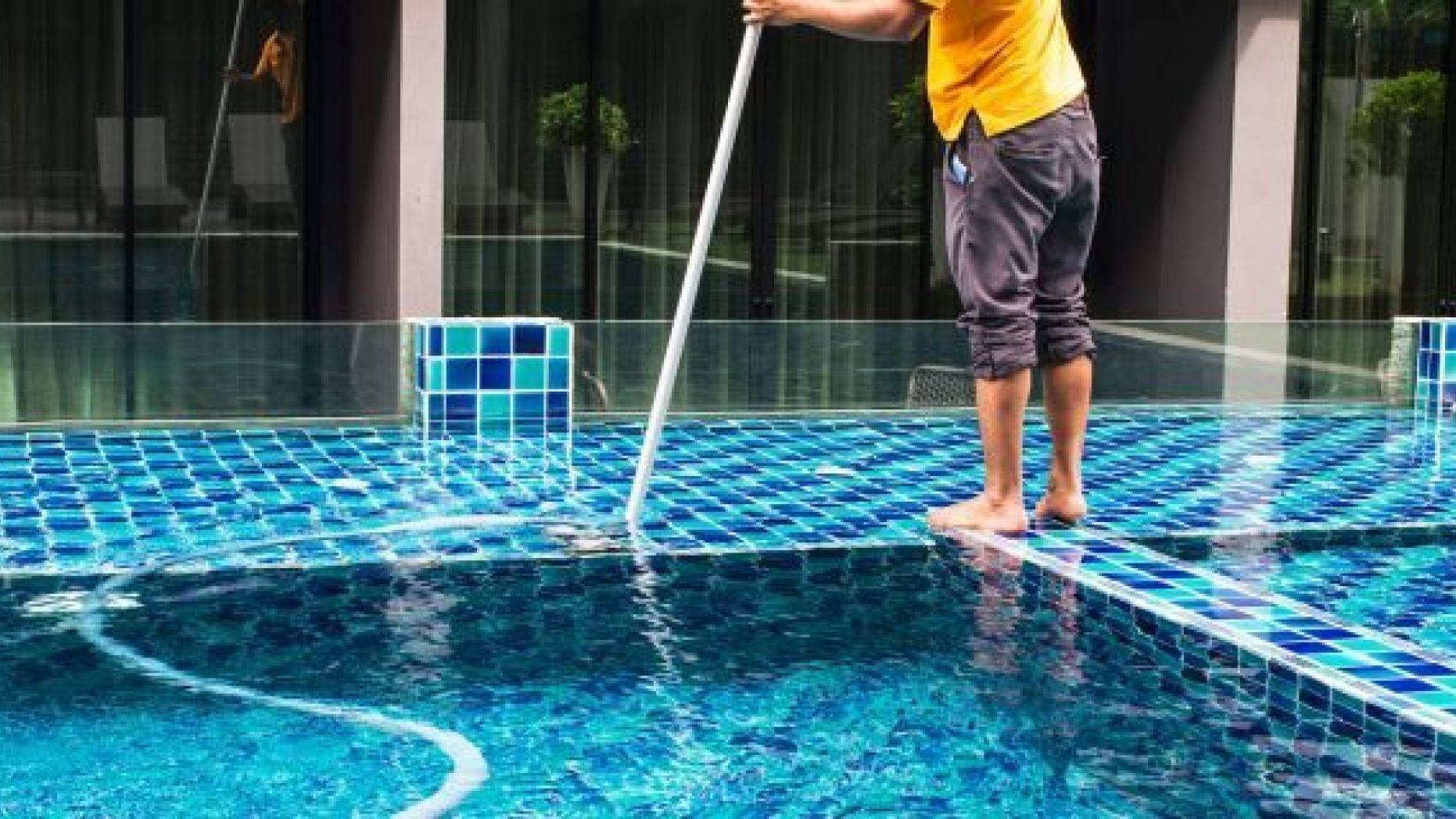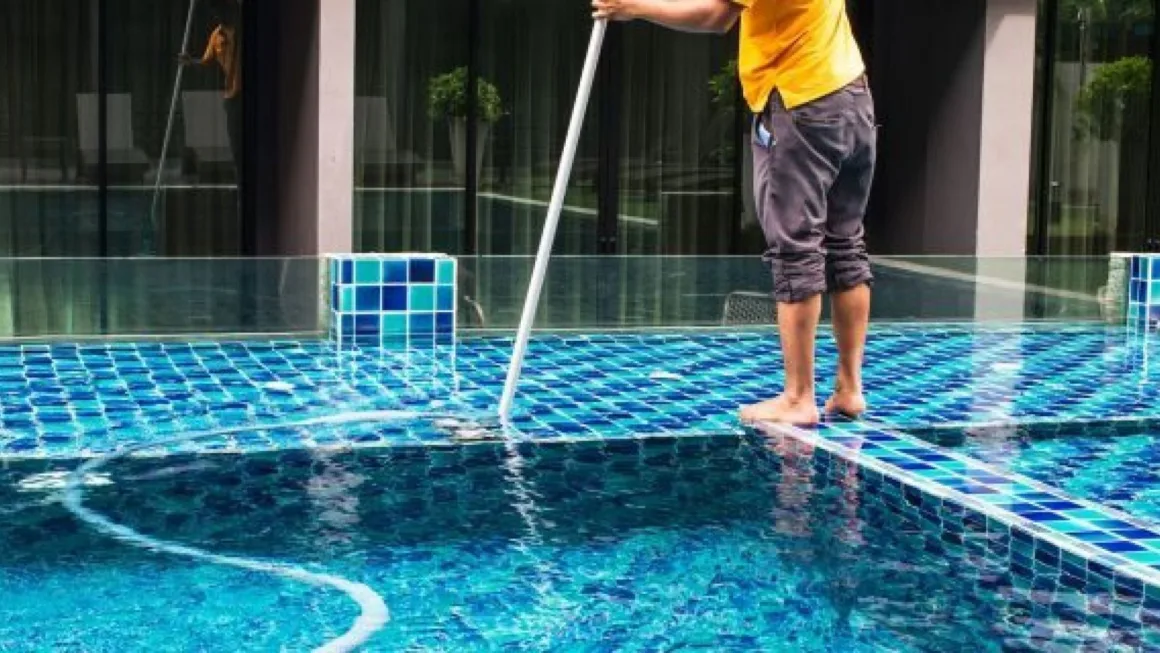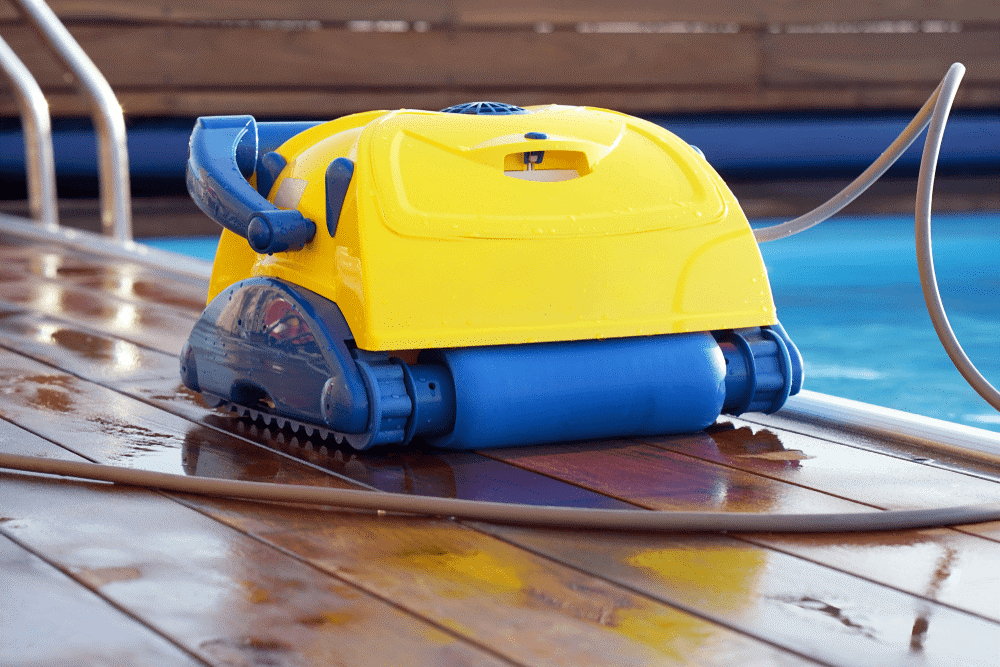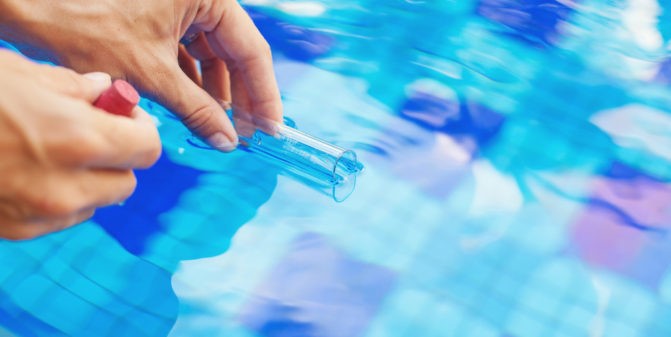Swimming pools are one of the many joys of life.
For anyone who owns a house with one or goes on holiday and enjoys a good swim, this would be the best investment to make.
Not only is it a good recreational activity, but it is also good for exercise, strengthening your muscles and lungs, keeps you fit, healthy and strong too.

The only downside to having one as a homeowner is getting it cleaned.
You need to cover your pool with a pool enclosure or retractable pool cover, and if you don’t keep it covered when you’re not using it, it can get dirty on the inside due to dirt, grime, insects, mud, dirt, dust, bugs, leaves, fungus, mold, and just about anything that can get to it.
Maintenance of any stagnant body of water especially near any home is essential. Not only for the fact that you are swimming in it, but also when water gets dirty it can contain a lot of various health hazards, when not treated and cleaned with chlorine.
According to Wikipedia, stagnation of water when left to gather dirt and pollutants can be a health risk and harbor pests such as mosquitoes who breed in it.
Mosquitoes can spread various dangerous diseases such as dengue and malaria, which are some of the most prevalent causes of death and disease worldwide.
Because it provides a better form of incubation than running water, unused swimming pools are often perfect conditions for these insects to live, breed, and add more bacteria and parasites to it.
Various types of bacteria are found in this type of water, find out about this from the website itself.
So, what’s the solution? The best one for this issue is to keep your pool clean and safe from any of those pesky bugs.
Good maintenance is one of the best things to do for you and your family, especially if you don’t use it that frequently.
This article will touch on this topic and give you some basic information on how to clean your pool, also providing some hassle-free ideas such as using a robotic pool cleaner.
Read on to find out more about this.
Cleaning Your Pool In a Few Easy Steps
Whether you’ve got brown dirt stains or leaves and debris from the outside that has fallen into the pool. Cleaning it is as simple as a few steps, which we have included for you below.
Firstly, you need to make sure you have the right equipment if you are doing this by yourself.
Then you can move on to the first step.
Brushing and Skimming
This is the process by which you use a telescopic pole with a net on the end which will help you to pick out all the dead leaves in the pool, and any insects, sticks, floating debris.
A leaf skimmer is a very important cleaning tool for any swimming pool. Make sure this tool is also cleaned regularly.
Get Out Your Pool Brush
This will be used to scrub around the edges and sides of the structure off mud stains and dirt stuck onto it, sometimes the tiles get discolored due to dirt getting stuck on them, so you may need a strong bristled one. Also, this needs to be kept clean.
The brush is usually attached to a long pole to avoid you having to get into the pool, you use it with both hands and scrub it along the edges as you go along.
Some people choose to use a specific cleaner for this purpose to put on the brush and clean everything. You can also get tablets to put into the water that will help loosen out any stuck dirt.
Chlorine is the Main Cleaning Agent
Using chlorine in the pool helps to keep it clean most of the time, but knowing how much to put is important, too much will irritate your skin and burn your eyes too and too little won’t do the job.
You can get either chlorine or algicides to clean your water but make sure you follow the manufacturer’s instructions to the T.
For chlorine and other pool chemicals, click here.
Pool Vacuum
If you’ve got a pool vacuum you can use this to help you out as well. The automatic types such as the best robotic pool cleaner options can save you a lot of time and effort, as you program them and turn them on and leave them to clean the water and the structure by themselves.
They are usually self-contained units that drive themselves around the sides and bottom of the pool and collect any dirt and debris left behind. Investing in them is the best thing to do.
There are different types available on the market from the suction types which may not be as good because they can suck up large things such as rocks and harm the filtration system, or you could get the pressure side cleaners, however, the most efficient ones are the robotic cleaners.
pH levels
When using chemicals always test the water’s pH levels, as factors like the change of seasons can affect this every couple of months, this should ideally be done three times a week to make sure it is safe to use.
The pH levels must be anywhere between 7.2 and 7.8, and if you are using acids, then lower alkalinity will be suitable (TA level).
Check Filter
Lastly, check the filter, if it needs to be cleaned out, this must also be part of the process. As they can easily get blocked and not do their job properly.
This also applies to the area surrounding the pool, which must also always be kept clean and free of any debris.
This cleaning and maintenance process must be done at least once a week to keep things in the best shape and cleanest state possible.
The point to note when starting this is, doing this chore may take a few hours, so make sure you have the time, to do it properly.
It may take a bit of work when doing it manually, or you can invest in something more automated such as the robotic option mentioned above that you find on online stores or pool shops.












